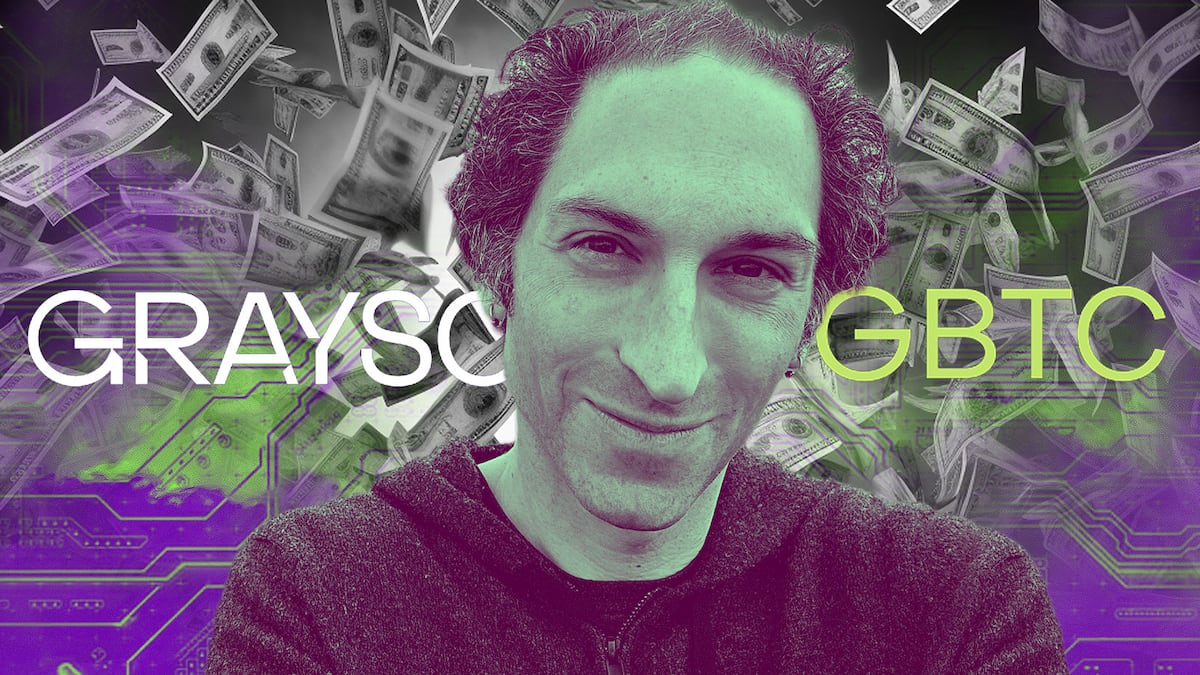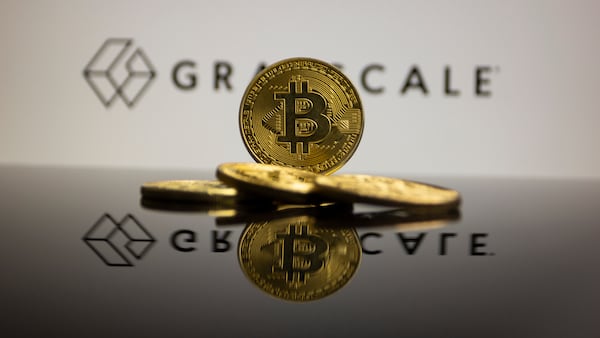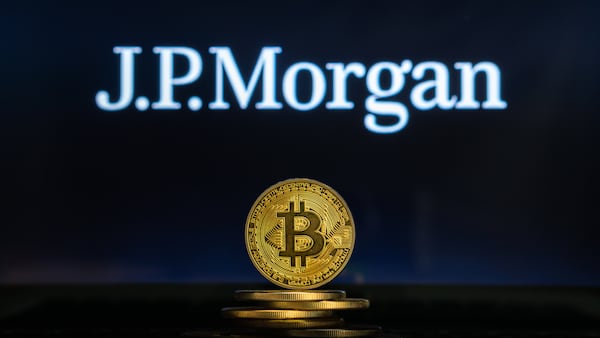- On the way to ETF approval, Grayscale's Bitcoin Trust behaved like a close-end fund, often deviating from the price of the underlying.
- Those deviations made heroes of some crafty funds, and widows of others.
- The Kentucky-based fund Aristides was a big winner of the great Grayscale trade.
- Other funds, like Hunting Hill, also piled in, scooping up GBTC from distressed firms like Alameda Research.
Hedge fund manager Chris Brown knows more than most about predicting the future.
As a physician in the US Air Force for seven years, Brown taught medical students Bayes’ Theorem, an 18th-century mathematical formula for calculating probabilities.
Brown used the same approach to anticipate Bitcoin’s moves. But instead of buying the coin itself, he rode the ups and downs of the Grayscale Bitcoin Trust, a product linked to the performance of the digital asset that traded like a stock.
Brown’s strategy worked.
Aristides Capital, a small fund Brown helps manage in Louisville, Kentucky, raked in $8 million by trading shares in GBTC, as the $20 billion trust is known.
The fund, the sixth biggest GBTC holder in September, bagged a return of roughly 35% — a big get for a minnow hedge fund with roughly $200 million in assets under management.
The win marks the end of what’s become a landmark trade in the annals of cryptocurrencies — investing heavyweights, including Cathie Wood, head of Ark Invest, racked up big returns, as did New York-based Saba Capital.
But as other money managers found, it was no slam dunk.
Now, the window of opportunity has shut — closing almost a month after the trust morphed into an exchange-traded fund since US regulators approved the rollout of spot price Bitcoin ETFs on January 10.
“The situation with the Grayscale fund was quite unique in that you don’t usually have an exchange-traded product at a relatively stable premium over time,” Brown told DL News. “It was obviously a very popular and relatively straightforward trade to see just by creating units directly from Grayscale.”
What Brown described is a GBTC trade that hinged on a quirk in its design.
The asset operates like a closed-end fund. This meant holders couldn’t redeem the shares for the underlying asset, causing massive deviations above and below the price of actual Bitcoin.
As reliable as a heartbeat
Profiting from Grayscale’s premium in the fund’s infancy seemed like the closest thing in the market to a sure thing.
”It really was only made possible by the unique kind of mania that people had that they were willing to pay a premium for that product over what the underlying points were actually worth,” said Brown.
Mania is an understatement.
A premium existed on GBTC from September 2014 all the way to February 2021, hitting a peak of 132% at one point, per data from CoinGlass.
Launched in 2013, Grayscale’s product was one of the only ways investors could access Bitcoin via a traditional brokerage, like Schwab or Fidelity, at that time.
Accredited investors like Aristides deposited Bitcoin directly with Grayscale or via now-defunct intermediaries like lending desks like Genesis or BlockFi, and received GBTC shares in return.
After a 12-month lock-up period, later cut to six months, those investors could sell those GBTC shares on the market and capture whatever premium existed.
Hunting Hill, another winner specialising in trading closed-end funds, with $364 million in assets under management, said it entered the market having little idea about Bitcoin.
The fund’s CEO, Adam Guren, told DL News that the firm started trading GBTC in 2017. Before that, Guren’s only exposure to crypto was trying to buy pizza with a cousin.
“It certainly wasn’t related to work,” he said.
When Hunting Hill jumped in, Grayscale’s fund was still trading at a massive premium.
Hunting Hill and a host of other firms eventually established a mechanism by which they could scale and hedge the premium trade efficiently.
“I’ll borrow Bitcoin, I’ll give it to the trust, and I’ll get shares. Now my position from there is I’m short Bitcoin to the lender,” said Guren. “And long GBTC restricted stock.”
Premium to discount
In 2021, the asset flipped to a discount, dropping nearly as low as 50% at one point and blindsiding unlucky holders.
The founders of the now-bankrupt Three Arrows Capital told Bloomberg last year that GBTC flipping, as well as Terra’s implosion, was one of the key reasons the fund blew up.
“That’s the same trade,” Guren said, referring to 3AC’s large-levered GBTC bet. “Five to one, or 10 to one, looks great. But if you do that a gazillion times, and it goes to a discount, it doesn’t matter.”
Guren said that Hunting Hill traded in and out of GBTC for some time but made “two big core orders” in November 2021 and January 2022.
“Those prices were around 42% [discount]. That was where we kind of drew a line in the sand,” he said, partly because “at that point, FTX was done. And Alameda also was in this trade.”
He said the firm could see Alameda entering the market because FTX’s sister trading firm used Interactive Brokers, the popular retail trading platform, to make trades.
“You’d have these massive orders coming from Interactive Brokers. And it took us a long time to find out who is actually this trader. Because it’s big, like really big,” he said. “They would come in with a few hundred thousand share orders at clips, like every day.”
As for Brown, he said Aristides first “dipped its toe” into discounted GBTC “somewhere in the high teens” in the spring of 2021.
“We also do a lot of value investing here,” he told DL News. “When a security gets cheap enough, there are several good things that can happen. And usually something good does happen.”
He pointed to a sudden resurgence in interest in GBTC shares or Grayscale lowering its whopping 1.5% management fee as reasons for the discount to narrow back to parity.
Neither happened. And yet Aristides pressed on.
“As it continued to blow out, it honestly got to be, for the most part, kind of a safer and safer trade,” said Brown. “Because you felt like it wasn’t gonna keep blowing out forever.”
According to Bloomberg data, Aristides was the sixth-largest holder of GBTC in September, trailing firms like Saba Capital, Ark Investment, and Morgan Stanley.
Fir Tree, another investment fund, built a $60 million position when the discount was as low as 42%, according to Reuters.
Ark placed its bets at roughly the same discount.
Grayscale’s second life as an ETF
Grayscale made headlines late last year after securing a key win in its ongoing battle to convert the fund to a Bitcoin ETF.
A conversion meant that savvy investors and arbitrageurs could finally trade away any premium or discount that emerged as the fund could be redeemed for actual Bitcoin.
A Washington judge ruled that the SEC’s reasoning for denying Grayscale’s conversion attempts was “arbitrary and capricious.”
The agency chose not to appeal the filing, meaning the investment firm’s most-prized fund was well on its way to recovery.
Brown had his doubts, immediately trimming Aristides’ position.
“Knowing that you might be wrong, and therefore you need to proceed with caution, is a really important thing for hedge fund managers to know deep down,” Brown told DL News. “That acquired sense of humility has helped us to control risk exceptionally well over the years.”
He pointed out that the mathematical idea of Bayes’ Theorem – measuring the probability of outcomes no matter how outlandish – was also hugely influential in his life as a doctor.
“I was expecting that the headlines would be very overstated, and there’d be an overreaction, and that the SEC might find another way around,” he told DL News. “Our first reaction after that verdict was to immediately take some of the trade off at about a 17% discount.”
Brown dug into the ruling more closely, concluding that it was actually much stronger than he expected.
“It became a much different trade after that point. Approval was imminent,” he said.
“Most arb trades, you would have taken a lot off as it started to go your way. But, in this case, the fundamentals kept getting better and better.”
Hunting Hill exited at a 7% discount, with Guren saying that the “symmetry starts to flip,” outlining many potential outcomes that didn’t end in approval.
At a discount of just 1.5%, a near-perfect bill of health for the once-wavering fund, Brown said that the fund exited 69% of its position.
“The interesting part of the trade is probably done. But you never know what’s going to happen next,” he told DL News. “These days, things are very calm in that market. And that’s good.”
Liam Kelly is DL News’ Berlin correspondent. Contact him at liam@dlnews.com.






